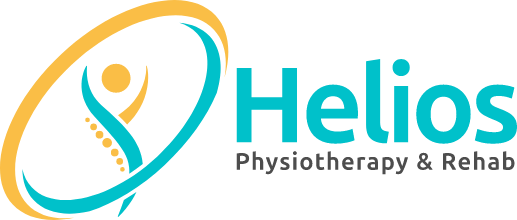 URINARY PADS Are Temporary Solution Until You See a PELVIC THERAPIST
URINARY PADS Are Temporary Solution Until You See a PELVIC THERAPIST
Urinary incontinence is a common and often embarrassing condition that affects millions of people. It is a common condition that affects people of all ages and genders.
Urinary incontinence is the unintentional loss of urine. It is characterized by the loss of bladder control, leading to unexpected and sometimes frequent urination. Urinary incontinence can be caused by a variety of factors, including Pregnancy and Childbirth, Menopause, Aging, Pelvic Surgeries, certain medications, urinary tract infections, and neurological disorders. It can have a significant impact on a person’s quality of life, causing embarrassment, anxiety, and social isolation.
There are several types of urinary incontinence, each with their own causes and treatments. The most common types of urinary incontinence are:
- Stress incontinence: This occurs when urine leaks during activities that increase pressure on the bladder, such as coughing, sneezing, laughing, or exercising. It is more common in women and is usually caused by weak pelvic floor muscles or damage to the urethral sphincter.
- Urge incontinence: This is when a sudden and intense urge to urinate is followed by an involuntary loss of urine. It can be caused by overactive bladder muscles, nerve damage, or certain medications.
- Overflow incontinence: This is when the bladder doesn’t completely empty, leading to frequent or constant dribbling of urine. It can be caused by a blockage in the urethra, nerve damage, or weak bladder muscles.
- Functional incontinence: This occurs when a physical or mental impairment makes it difficult for a person to reach the bathroom in time, leading to unintentional urination. It can be caused by conditions such as arthritis, dementia, or stroke.
- Mixed incontinence: This is a combination of two or more types of urinary incontinence, most commonly stress and urge incontinence.
- Overactive bladder (OAB): is a common condition where a person experiences a sudden and intense urge to urinate, often with frequency and urgency, and may have trouble controlling the urge to go to the bathroom. It can be disruptive to daily life and affect social and occupational functioning. In addition to frequent urination, people with OAB may also experience urinary incontinence, particularly urge incontinence, which is the involuntary loss of urine that occurs after the sudden urge to urinate. The causes may be related to an abnormality in the bladder muscles or the nerves that control them. Other factors that may contribute to OAB include bladder irritation, urinary tract infections, certain medications, and neurological conditions such as multiple sclerosis.
- Nocturia: is a condition in which a person wakes up during the night to urinate. It is a common condition that affects both men and women, especially as they get older. Normally, adults can sleep through the night without waking up to urinate. However, when a person wakes up frequently during the night to urinate, they may not feel rested the next day. Nocturia can have several causes, including drinking too much fluid before bedtime, bladder irritants such as caffeine or alcohol, certain medications, an overactive bladder, and underlying medical conditions such as urinary tract infections, enlarged prostate, diabetes, or heart or kidney failure. Treatment for nocturia depends on the underlying cause.
IMPACT OF URINARY INCONTINENCE ON LIFE
- Impedes physical activity, decline in activities of daily living (ADL): Urinary incontinence can impede physical activity as it can cause embarrassment, discomfort, and anxiety when engaging in physical activities that involve movements that can trigger urinary leakage, such as jumping, running, or weightlifting. The fear of leakage can make it challenging to participate in physical activities, leading to a decrease in physical fitness and overall health.
- Skin irritation: Urinary incontinence can cause skin irritation and rash due to prolonged exposure to urine.
- Urinary tract infections (UTIs): Incontinence can increase the risk of UTIs, which can be painful and uncomfortable.
- Social isolation: People with urinary incontinence may become socially isolated due to embarrassment or fear of leakage in public.
- Sleep disturbances: Incontinence can disrupt sleep due to the need to get up to use the bathroom or change pads during the night.
- Psychological distress: The loss of control over urine can lead to anxiety, depression, reduce self-esteem and a decrease in quality of life.
- Increased risk of falls: Incontinence can increase the risk of falls due to the need to rush to the bathroom which can cause more Nursing Home Admissions. It can Heavy economic burden on patients, families, and society
Pelvic Physiotherapy has emerged as a very effective, conservative, and non-invasive solution for this problem. Unlike surgery or medication, pelvic physiotherapy does NOT have any major side effects. Pelvic Therapy can play a major role in managing and improving symptoms of urinary incontinence. It is ideal for individuals who are looking for a natural and low-risk solution for the urinary incontinence. Pelvic physiotherapy has a high success rate, and it is FIRST LINE OF TREATMENT for treating urinary incontinence.
It is a type of physical therapy that focuses on the muscles, connective tissues, and nerves of the pelvic region. This therapy can be used to treat a variety of conditions, including Urinary Incontinence, Pelvic Pain, Pelvic Organ Prolapse and Sexual Dysfunction.
It is achieved through Manual techniques, Pelvic Floor Muscle Training, Improving Bladder Functioning and Control, Urinary Tract Infection Prevention, Electrical Stimulation, Post Surgical Rehabilitation, Treating Constipation and Biofeedback. This can lead to a significant improvement in quality of life and can even eliminate the need for more invasive treatments.
Some common physiotherapy interventions for urinary incontinence include:
- Manual Therapy: Soft tissue release of the overactive pelvic floor and external pelvic girdle muscles. Including abdomen, hip flexors, adductors, gluteal and low back.
- Joint Mobilization/Manipulation: In joint mobilization, the therapist uses various techniques to apply gentle, rhythmic forces to the joint in a specific direction and amplitude. The forces applied may be oscillatory, sustained, or intermittent. The goal is to improve the mobility of the Pelvic, Sacroiliac Joint, L without causing pain or discomfort.
- Passive and Active Stretching: Active and passive stretching can help improve the flexibility, strength, and overall function of these muscles.
- Facilitation for Weak Pelvic Floor Muscles: Pelvic floor muscle Training Exercises to strengthen the pelvic floor muscles and improve bladder control.
- Bladder Retraining: Techniques to gradually increase the time between voids and reduce frequency of urination.
- Electrical Stimulation: The use of low-level electrical currents to stimulate the pelvic floor muscles and improve bladder control.
- Biofeedback: A technique that provides feedback on the strength and timing of pelvic floor muscle contractions to improve awareness and control.
- Education: Education is the key to success. Pelvic therapist will advocate you on Bladder Functioning, Lifestyle Management, etc.
It is important to consult with a Certified Pelvic Therapist to determine the most appropriate course of treatment for urinary incontinence. In conclusion, Pelvic Physiotherapy is a vital component of the treatment process for urinary incontinence. By offering a safe and effective solution, it can help you to regain control of the bladder and improve the quality of life. If you are experiencing symptoms of urinary incontinence incorporate pelvic physiotherapy into your treatment plan. CALL or BOOK ONLINE a Free Consultation with our Pelvic Therapist at Helios Physiotherapy and Rehab.
